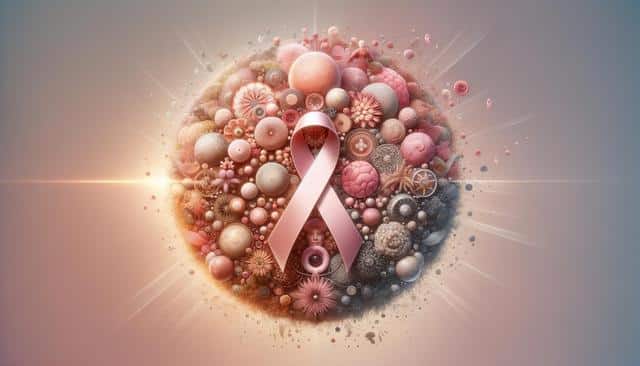Understanding Breast Cancer: A Guide to Recognizing Symptoms and Exploring Care Options
Understanding the basics of breast cancer can play a crucial role in recognizing early signs and exploring care options. This guide offers an informative look at symptoms, available treatments, and support resources to help you stay informed about your breast health.

Recognizing the Symptoms of Breast Cancer
Breast cancer is a complex disease that manifests through a variety of symptoms, and recognizing these early signs can be pivotal for effective treatment. Common symptoms include the presence of a new lump or mass in the breast, which is often painless but can feel hard and irregular. However, not all lumps are cancerous; some may be benign cysts or caused by other conditions. Additional signs to watch for include swelling of part or all of the breast, irritation or dimpling of breast skin, pain in the breast or nipple area, and nipple discharge other than breast milk, sometimes containing blood. It’s important for individuals to perform regular self-examinations and seek medical consultation if any abnormalities are detected. Early detection through awareness of these symptoms can significantly improve outcomes.
Understanding Diagnostic Procedures
When symptoms suggest the possibility of breast cancer, various diagnostic procedures are employed to confirm the presence and extent of the disease. Mammograms are one of the most common screening tools, using low-dose X-rays to detect changes in breast tissue. If abnormalities are found, further imaging tests such as ultrasound or MRI may be conducted to gain additional insight. A biopsy, where a sample of breast tissue is removed and examined microscopically, is often necessary to confirm a diagnosis. These diagnostic tools, used in combination, help to accurately stage the cancer and guide treatment planning. Understanding these procedures can alleviate anxiety and empower individuals to make informed decisions about their health care.
Exploring Treatment Options
Treatment for breast cancer varies significantly depending on the stage and type of cancer, as well as the patient’s overall health and personal preferences. Common treatment modalities include surgery, such as lumpectomy or mastectomy, to remove cancerous tissue. Radiation therapy, which uses high-energy rays to target and destroy cancer cells, is often used post-surgery to eliminate residual disease. Chemotherapy employs drugs to target rapidly dividing cancer cells and can be administered before or after surgery. Hormone therapy may be effective for cancers that are sensitive to hormones, while targeted therapy focuses on specific characteristics of cancer cells. Combining these treatments, known as a multimodal approach, is frequently recommended to maximize efficacy.
The Role of Support Systems
The journey through breast cancer diagnosis and treatment can be physically and emotionally challenging, making support systems an essential part of care. Family, friends, and healthcare professionals can provide invaluable emotional support and practical assistance with day-to-day activities. Support groups, either in-person or online, offer a platform for sharing experiences and advice, fostering a sense of community and understanding. Many organizations also provide resources such as counseling services, financial assistance, and educational materials to help individuals navigate their journey with breast cancer. By leveraging these support systems, patients can better cope with the demands of treatment and recovery.
Preventive Measures and Ongoing Research
While not all cases of breast cancer can be prevented, certain lifestyle changes can reduce risk. Maintaining a healthy weight, engaging in regular physical activity, limiting alcohol consumption, and avoiding tobacco use are all beneficial for breast health. Additionally, staying informed about family medical history and discussing potential genetic testing with healthcare providers can offer insights into personal risk factors. Ongoing research continues to improve understanding and treatment of breast cancer, with advancements in personalized medicine and immunotherapy offering hope for more effective and less invasive options in the future. Keeping abreast of these developments empowers individuals to make proactive choices about their health.
Conclusion
Breast cancer awareness is a vital component in the fight against this prevalent disease, empowering individuals with the knowledge to recognize symptoms and explore comprehensive care options. By understanding the diagnostic and treatment processes, as well as leveraging strong support systems, patients can navigate their journey with resilience and determination. Preventive measures and ongoing research further contribute to improving outcomes and fostering hope for those affected by breast cancer. Embracing awareness and education is essential for encouraging early detection and enhancing quality of life.